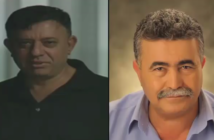By Tiffany Gee Lewis , For the Deseret News
Number of ‘religious charter schools’ continues to grow — along with criticism
In a worn-down Minnesota neighborhood, perched at the top of a steep hill not far from the Mississippi River, sits a low-slung, brown brick school. Today, the school is a mostly forgotten place, abandoned by its former tenant and taken up by another.
When the school first opened in 2003, it quickly gained attention for its success in pulling above average test scores from a student population where 90 percent of the children were at the poverty level. And then the controversy began.
The school was called the Tarek Ibn Zayed Academy (TiZA), named for the medieval general of Morocco who defeated the Visigoths and ruled Spain starting in 711. It attracted an extensive waiting list of immigrant families, the majority from the Middle East and Africa.
Yet just as TiZA made a name for itself academically, the controversy began to stir around its tie to Islam. The principal of the school, Asad Zaman, was a prominent local imam, or Muslim religious leader, and also a founding member of the Muslim American Society of Minnesota, an organization that shared a building with TiZA. It was estimated that more than 90 percent of the student body were Muslim. Daily Arabic lessons were part of the curriculum. Critics said the line between church and state was just too blurry.
So it was that Minnesota, home of the first charter schools, would once again be the center of a new controversy: the charter school that tries to walk that delicate line between religion and culture. TiZA is now shut down and embroiled in a protracted legal fight with the ACLU. The case could be a harbinger of what’s to come for other charter schools that have ties to religious groups, says Michael McConnell, a former federal judge who represented TiZA in the case.
THE RISE OF RELIGIOUS CHARTER SCHOOLS
There has been a veritable explosion of charter schools over the past two decades, and riding that trend are charter schools founded or authorized by a religious or cultural organization. The issue of religion in schools has always been a hot-button topic, and the rise of charter schools that tie themselves to a certain ethnic or religious group introduces a new shade of complication to public schooling.
Bruce S. Cooper, a professor of educational leadership at Fordham University, has labeled these “religious charter schools,” a term that rankles many in public education. According to Cooper, a religious charter school is funded by the state but is founded, supported or connected to a religious organization. He cites many examples of these religious charter schools, from Florida’s Ben Gamla schools that teach Hebrew to the proliferation of Greek-teaching charter schools in New York City, some of them situated in former Greek Orthodox churches.
Money largely explains why religious organizations get involved in the charter school movement because it allows them to establish a school that teaches the culture of their beliefs without the financial overhead of a private school. The most drastic example of this was in 2008, when the Archbishop Donald Wuerl converted a number of failing Catholic private schools into charter schools in Washington, D.C.
Cooper, who co-authored the book “Blurring the Lines: Charter, Public, and Private Schools Come Together,” sees no problem with the rise of these schools. They draw from churches that have a good relationship with the community, he says, and often they take advantage of space where schools have been shut down, giving parents another free public school option.
“We like to call it the new Golden Mean: the new middle ground, the best of public and private come together to create the best of both for families,” he said. “I’m glad we have the separation (of church and state), but I think there can be some coordination.”
A VIOLATION OF CHURCH AND STATE?
Charter schools that cater to a specific demographic are not unusual. It’s part of what makes them so attractive to parents when looking for an alternative to traditional public school. In TiZA’s case, the curriculum and culture of the school attracted families looking for a conservative Muslim environment paired with rigorous academics. The website touted that the school “recognizes and appreciates the traditions, histories, civilizations and accomplishments of Africa, Asia and the Middle East.” Yet critics of the school said its association with Muslim leaders and groups crossed the line between cultural and religious practices.
In Minnesota, charter schools must have an authorizer who oversees the fiscal and academic responsibilities of the school. In TiZA’s case, the authorizer was Islamic Relief USA, a non-profit humanitarian agency then-based in California. It was this tie that made Katherine Kersten, a Minneapolis newspaper columnist and senior fellow at the Center for the American Experiment, first look into what was going on at TiZA. In March 2008 she penned a column titled, “Are taxpayers footing bill for Islamic school in Minnesota?”
In her column, Kersten said the majority of students attended after-school Islamic studies before school buses took them to their homes. She also quoted a source that had been to the school and observed the students praying, eating halal food (permissible under Islamic law), and fasting from dawn to dusk during Ramadan.
In an interview with the Deseret News, Kersten asserted that TiZA was using its Arabic curriculum to promote religion “in a very clear way.” Kersten, whose own children attended religious private school, took issue with a school she thought was smuggling in the Islamic religion through its curriculum.
At her urging, the Minnesota Department of Education looked into the matter. After an extensive inquiry, they told the school to make some minor tweaks to busing and the prayer schedule, but emphasized that the school did not violate the separation of church and state.
Kersten next went to the American Civil Liberties Union of Minnesota, which filed suit against TiZA in January 2009. TiZA countersued with charges of religions discrimination. When a law was passed in Minnesota that the authorizer of a state charter school had to be based within the state, TiZA lost its funding from Islamic Relief USA. By July of this year, embroiled in financial trouble and lacking an approved charter school sponsor, the Minnesota Education Department ordered that TiZA be shut down. The ACLU and TiZA are still involved in court hearings.
Michael McConnell, a former federal judge who represented TiZA in the case, worries about the long-term effect of shutting down the school could have on similar institutions.
“If any school wants to operate in a way that accommodates the religious needs of a minority, they now have to ask themselves – can they withstand the onslaught of the ACLU spending literally millions of dollars on the litigation to shut them down,” McConnell says. “That’s really what is, in my mind, the most shocking thing about all of this, is the enormous resources that the ACLU put into shutting down this very well-meaning school.”
THE IMPACT ON FAMILIES
The closing came as a blow to families whose children attended TiZA. Krista Siddiqui, whose three children had been there for years, had to scramble in just a month’s time to find alternate schools. TiZA’s building was quickly snapped up by another middle school charter, the STEP Academy, so her oldest daughter remained at the same facility. Saddiqui is still evaluating options for her other children. As for the rest of TiZA’s student population, the ones who could afford it moved to a private Islamic school, but the majority of the students returned to their inner-city schools.
Siddiqui had hand-picked TiZA as the best school option for her children long before they were old enough to enroll. A 20-year convert to Islam, she wanted her kids to attend a school where they would not be ridiculed for their faith. She also knew the administrator, and knew of his passion for educating children. TiZA, with its strong test scores and predominantly Muslim population, fit what Siddiqui was looking for.
“It was an extremely rigorous school,” she said. “It was a ton of work, and not an easy school for my kids to go to, but I liked that about it.” Siddiqui’s three school-age children brought home test scores in the top one and two percent of the nation.
Even before sending her kids to public school, Siddiqui heard stories about the bullying that happened toward Muslim students.
“I had friends whose children attended public school,” she said. “The kids were called terrorists and told to go back to their own country, even though they and their parents were American. I wasn’t looking for a school that made my children better Muslims. I was looking for a school that didn’t make them feel like outcasts being Muslim. (At TiZA) they felt comfortable being who they were.”
Siddiqui, who spent hours at TiZA as a volunteer, denied that the school ever crossed the line between church and state, but she understands how an outside observer might confuse the culture of the student population with religion.
“Islam is your lifestyle,” she said. “It’s about what you eat, how you dress. You can’t take that all out of these kids when they go to school. They are going to wear their scarves. They’re not going to serve pork in the cafeteria where the majority of kids won’t eat it because it will be wasted.”
The accusations against TiZA also came as a surprise to Wayne Jennings, who worked from the inception of the school as Islamic Relief USA’s representative. He had been to the school dozens of times, and never saw anything that made him question the line between church and state.
As a seasoned educator and school administrator, as well as a decades-old member of both the Minnesota ACLU and Americans United for Separation of Church and State, Jennings was particularly sensitive to making sure no lines were being crossed.
“I never liked that there was an opportunity for students to pray during the day,” he said. “There was a time when everything would stop, when all the students who wanted to would kneel down facing the northeast to say a silent prayer. But these things were permitted by the state. When I started teaching back in 1958, I didn’t like that kids would leave 45 minutes early to take catechism class. But I didn’t make the rules. That was permitted.”
FAITH AND THE FRAGMENTATION OF THE U.S.
It is exactly this kind of cultural and religious grouping that concerns Barry Lyn, executive director of Americans United for Separation of Church and State. Lyn, who doesn’t support charter schools, believes that dividing students into specialized schools further fractures the country.
“It’s been said the hour of worship on a Sunday morning is the most segregated hour in America,” he said. “There are not that many desegregated churches. I don’t like to think we’re going to divide ourselves, starting with kids in kindergarten and preach the same thing we’re going to hear on a Saturday or Sunday at church.”
Yet, if you walk into a traditional public school, it’s clear that segregation is already happening. Suburban white kids go to school with other suburban white kids, while inner-city schools are filled with low-income, minority students. And while middle- and upper-income families can choose an area to live based on school preference, lower-income families are often pigeonholed into finding housing that is affordable, regardless of schools.
“There are suburbs where there is an admissions price: the ability to purchase a million-dollar home or condo,” said Joe Nathan, founder of the Center for School Change at Macalester College in St. Paul, Minn. Nathan is an advocate for giving low-income and minority families the same array of quality education choices that upper-income families have. Charter schools specifically have been most effective in low-income areas where parents have banded together to create an alternative learning environment for their children.
Nathan is quick to point out, however, that charter schools should not in any way breach the separation of church and state. “The charter is not just about choice and freedom. The charter idea is about public, non-sectarian schools.” Nathan, who has assisted in writing charter-school laws in multiple states, has seen cases where both charter schools and traditional public schools have breached the separation of church and state, but they have been quick to fix it.
As for TiZA, Nathan defended the now-defunct charter school. Having visited the campus several times, he said that it was operating within the law between the separation of church and state. However, he attributes the success of the school to its academic rigor, not the fact that the majority of students were of one particular race or religious group.
“The fact that they were deeply committed to factors of academic achievement had far more to do with (their success) than them being predominantly Muslim.”
Tiffany Gee Lewis lives in St. Paul, Minnesota and is a regular contributor to the Deseret News
EMAIL: tiffanyelewis@gmail.com






